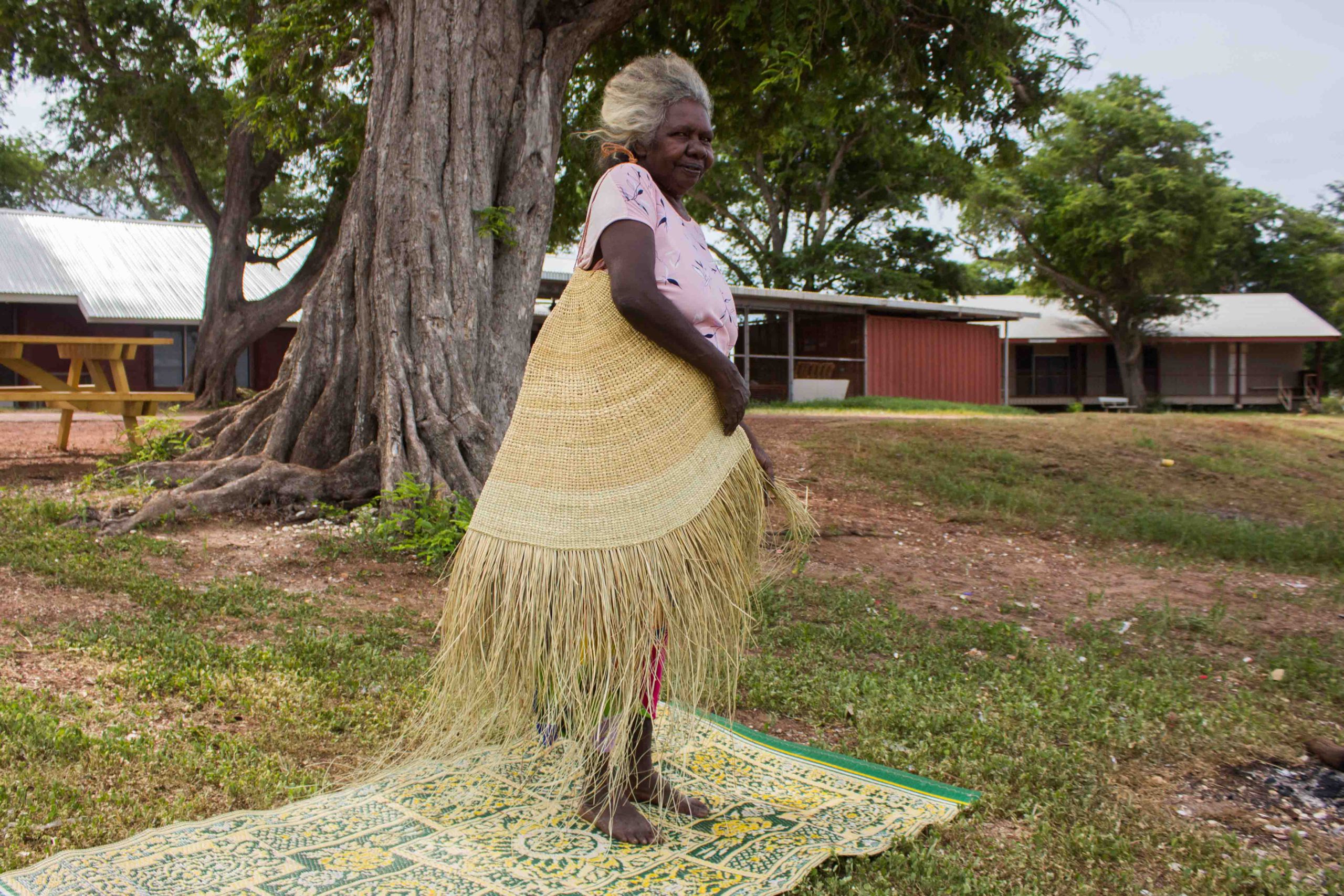Garrawurra are singing and waking up the young girl. They are standing on my mother’s country—singing from sunrise to sunset. This is women’s secret sacred ceremony. The deep story is not for here.
—Susan Balbunga
Susan Balbunga’s mother’s country of Maljikirridi-marrawindi is one of several sites where the Yolŋu creation beings, the Djaŋ’kawu Sisters, stopped as they travelled east to west across North East Arnhem Land. At each location their actions, their tools and their tongue (spoken language) formed metaphors for how humans would live. In a broad sense, they created the Law, language, culture, and song of each clan. On a more intimate level, the metaphors within each story underpin the dynamics of relationships—such as those between men and women, mother and child, young and old.
Balbunga’s Bamugora* is an object that operates both functionally and metaphorically for child conception, birth, women’s business, coming of age, and death. It is a womb that holds a fertile egg; a fishing net that catches a newborn; a tool for young men and women during initiation; a source of protection from sun, wind, rain and insects; a form of ground cover and shelter for a mother and her newborn; and a protective object for an elder nearing the end of life.
The artist states:
Bamugora is very special and it is very powerful.
Old people used them a long time ago.
I watched my grandmother when I was a young girl.
I watched her with my eye and recorded it in my memory.
There was no blanket or sheet, just Bamugora.
We would sit on top or sleep underneath.
We used Bamagura to cover ourselves, our babies and our old people.
It keeps us safe.
We were protected. No ants, scorpions, spiders or mosquitos would go under —maybe they don’t like the smell, I don’t know, but they won’t enter.
We used raŋan** (paper bark) then. Raŋan was our sheet. We didn’t have clothes, we wore a belt made from baḻgurr** (kurrajong) fibre.
The Djaŋ’kawu Sisters changed their name and tongue when they got to my mother’s country. They used their Bamugora there.
When old people are ready to die, we cover them with Bamugora and we sing. We sing in Burarra or Yan-nhaŋu but in the voice of Garrawurra.
Balbunga began making this work in May 2019 and completed it in March 2020. Within this period, she and her extended family performed bäpurru** (funeral ceremony) for her youngest daughter to ensure her spirit would return to her origin waters.
* Burarra terminology
** Yolŋu Matha terminology
Story by Susan Balbunga
Translation by Phillip Guyabaka
Written by Rosita Holmes
Edited by Salome Harris
This artwork was exhibited at the Institute of Modern Art, Brisbane, September 2020 as part of long water: fibre stories, an exhibition curated by Freja Carmichael. The above text was developed for the exhibition catalogue. To purchase a copy of the exhibition catalogue contact the IMA gallery shop on 07 3252-5750. To find out more about the Long water touring program see the IMA website.
